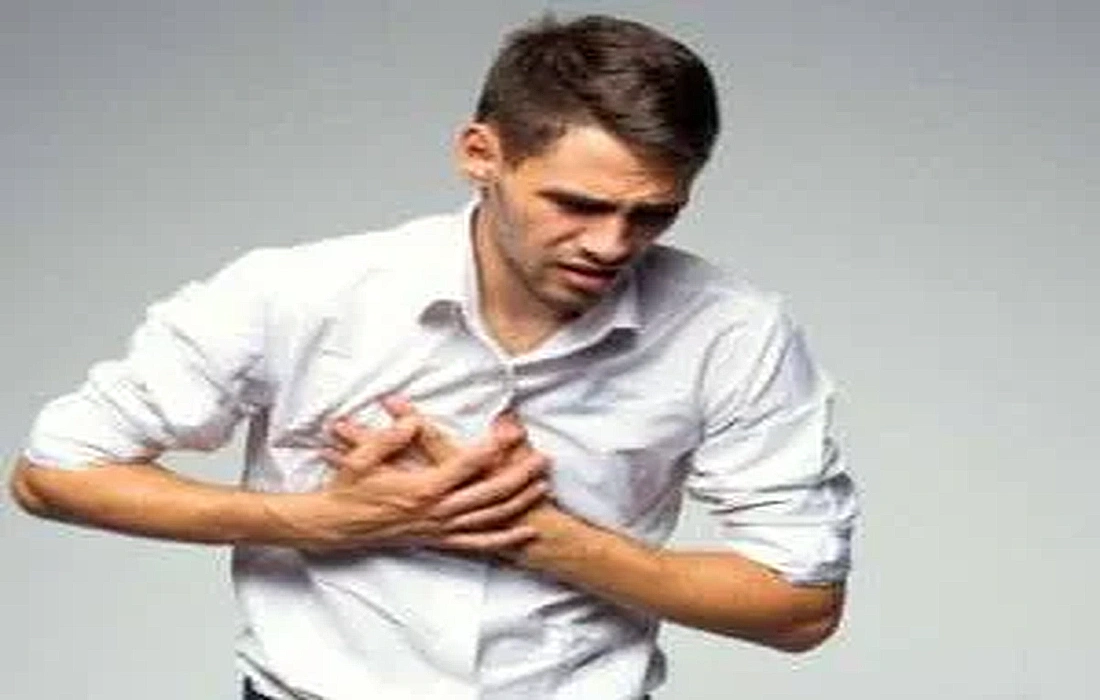Inflammation inside the heart lining or Heart Endocarditis
Endocarditis is an infection of the inner lining of the heart chambers and valves, usually caused when bacteria, fungi, or other microbes spread from other parts of your body such as your mouth into your bloodstream and attach to damaged heart tissue.
If not treated quickly, it can damage or destroy your heart valves and lead to life-threatening complications. Treatment for endocarditis includes usingantibioticsand, in special cases, surgery.
Since there are many ways for endocarditis to develop, your doctor may not always identify the exact cause. However, people at risk usually have damagedheart valves or artificial heart valvesor other heart defects.

Symptoms of cardiac endocarditis
Endocarditis can start gradually or suddenly depending on whether microbes are causing the infection and whether you have heart problems. In this health section ofSelMagzIt is said that symptoms of endocarditis can vary among individuals; common signs include:
- Flu-like symptoms such as fever and chills
- New or changed heart sounds caused by blood rushing through your heart.
- Fatigue
- Joint and muscle pain
- Night sweats
- Shortness of breath
- Chest pain when breathing
- Swelling in your legs or abdomen

Endocarditis can also cause other symptoms such as:
- Unexplained weight loss
- Blood in urine, which you may see or your doctor may detect under the microscope during urine tests.
- Inflammation of the spleen, a abdominal organ located under the rib cage on the left side of your body.
- Janeway lesions are red patches on the soles of your feet or palms of your hands.
- Osler’s nodes are small, red, tender spots under the skin of your fingers or toes.
- Purple spots, small or red, on the skin, white of the eyes, or inside the mouth.

When should you see a doctor?
If you notice symptoms of endocarditis that do not go away, see your doctor ASAP, especially if you have serious risk factors like heart defects or past episodes of endocarditis. Although serious conditions can cause similar symptoms, only a healthcare provider can make an accurate diagnosis.
Causes of cardiac endocarditis
Endocarditis occurs when microbes enter your bloodstream and infect or damage the heart valves or tissue. Certain bacteria often cause these infections, but fungi or other microorganisms may also be responsible.
The immune system usually eliminates harmful bacteria that reach your bloodstream, and they may pass through the heart without causing infection. However, bacteria living in your mouth, throat, or other parts of your body such as skin or intestines can sometimes cause serious issues like endocarditis under certain conditions.

Bacteria, fungi, or other microbes responsible forEndocarditismay enter your bloodstream through:
- Everyday activities like brushing your teeth or other actions that cause bleeding gums allow bacteria to enter your blood—especially ifyou do not use dental flossor your teeth and gums are unhealthy.
- An infection or other medical conditions.
- Bacteria can also enter from an infected area like a wound on your skin.
- Other medical conditions such as gum disease, sexually transmitted infections, or certain bowel disorders like inflammatory bowel disease can also introduce bacteria into the bloodstream.
- Bacteria may enter your body through catheters—tubes used by doctors to inject or remove fluids, especially if used for long periods.
- The needles used for tattoos or body piercing.
- Bacteria that can cause endocarditis can also enter your blood through needles used in tattooing or piercing procedures.
- Injecting illegal drugs.
- Contaminated needles and syringes used by those who inject drugs like heroin or cocaine often carry bacteria that can cause endocarditis, especially when sterile equipment is not available.
- Some dental procedures can tear your gums and allow bacteria to enter your bloodstream.
- Bacteria can easily attach to rough or damaged heart lining; if your heart valves are abnormal, sick, or damaged, your risk of endocarditis increases. However, it can also occur in healthy individuals.

Risk factors for endocarditis
Heart chambers and valves:
If your heart is healthy, your risk of endocarditis is lower; microbes tend to stick to damaged or surgically altered valves or rough surfaces within the heart.
The people most at risk include those who:
Have artificial heart valves:
Are more likely to have bacteria attach to artificial valves than to natural ones.

Congenital heart defects:
If you were born with certain heart defects, like irregular heart rhythms or abnormal valves, you may be more vulnerable to infections.
History of endocarditis:
Endocarditis can damage the tissue and valves of the heart, increasing the risk of future infections. Damaged valves or conditions like rheumatic fever or existing infections can harm one or more valves and make them more susceptible to endocarditis.
History of drug use:
People who inject illegal drugs are at risk. Used needles can be contaminated with bacteria that cause endocarditis.

Diagnosis of heart endocarditis
Your doctor may suspect endocarditis based on your medical history, symptoms, signs, and test results. Usually, diagnosis is based on multiple factors rather than a single positive test or symptom.
Your doctor may perform several tests to confirm the diagnosis, including:
Blood tests:
A blood culture to identify bacteria or fungi in your blood—this is the most important test your doctor will perform.Blood tests:They can also help identify conditions that may be signs of endocarditis, such as anemia or low levels of healthy red blood cells.

Echocardiogram:
Uses sound waves to produce images of your heart while it beats. This often helps in detecting infection. Your doctor may use two types of echocardiograms to diagnose endocarditis:
Electrocardiogram (ECG):
While not specifically used for diagnosing endocarditis, it can show if something affects your heart’s electrical activity. During the ECG, sensors detect electrical signals from your chest, arms, and legs, measuring the timing and duration of each electrical phase of your heartbeat.Imaging with X-rays:X-ray images help your doctor see your lungs and heart. They can determine if endocarditis has caused your heart to enlarge or if the infection has spread to your lungs.

Microwave imaging or MRI scans:
If your doctor suspects the infection has spread to other areas, they may order a
CT scan
or MRI of the brain, chest, or other areas of your body.Side effects of cardiac endocarditisIn endocarditis, bacterial masses and cellular debris form within your heart at the site of infection. These masses, called vegetations, can break off and travel to the brain, lungs, abdominal organs, kidneys, or other parts of your body, causing major complications such as:

– Heart problems, including valve damage and heart failure
– Stroke
- – Seizures
- – Loss of ability to move part or all of the body (paralysis)
- – Pus discharge (abscesses) forming in the heart, brain, lungs, or other organs.
- – Pulmonary embolism—an infected clot blocking a lung artery
- – Kidney damage
- – Enlarged spleen
- Prevention of heart endocarditis
- You can take various steps to prevent endocarditis, including:

Recognize the symptoms and signs of endocarditis; if you notice any, see a doctor immediately, especially if you have serious risk factors like congenital heart defects or previous episodes. Conditions that cause similar symptoms may exist, but only a healthcare provider can confirm the diagnosis.
Pay close attention to your dental health; brush teeth and gums regularly and get dental checkups.
Avoid procedures like body piercing or tattooing that may cause skin infections.
Treatment of heart endocarditis
Many cases of endocarditis are successfully treated with antibiotics. Sometimes surgery is needed to repair damaged valves and remove any remaining infection signs.
Antibiotics:
If you have endocarditis, your doctor may prescribe high doses of intravenous antibiotics in the hospital. Blood tests are used to identify the bacteria or fungi causing your infection.
Based on blood test results, your doctor will select the best antibiotics or combination thereof. When you start antibiotics, you will usually stay in the hospital for a week or more, allowing your doctor to see if the antibiotics are working. Usually, antibiotics need to be used for several weeks to clear the infection.
Once your fever and severe symptoms subside, you can leave the hospital and continue taking antibiotics through your clinic or at home. You should still regularly follow up with your doctor to ensure your treatment is progressing well.
You should inform your doctor if you notice any signs or symptoms that might indicate your infection is worsening, such as:

– Fever
– Chills
- – Headache
- – Joint pain
- – Shortness of breath
- Also, if you experience diarrhea, rashes, itching, or joint pain, tell your doctor, as these may be reactions to the antibiotics.
- After starting antibiotics, if you develop
shortness of breath
or swelling of your legs, ankles, or feet, seek medical care immediately, as these can be signs of heart failure.Surgery:If the infection damages your heart valves, symptoms and complications can persist years after treatment. Sometimes, surgery is necessary to treat recurrent infections or replace damaged valves; surgical intervention is also essential for fungal endocarditis.

Based on your condition, your doctor might recommend repairing or replacing the damaged valve with an artificial valve made from cow, pig, or human tissue (biological tissue) or synthetic materials (mechanical valve).
Heart Endocarditis or inflammation inside the heart lining
Signs of heart endocarditis







